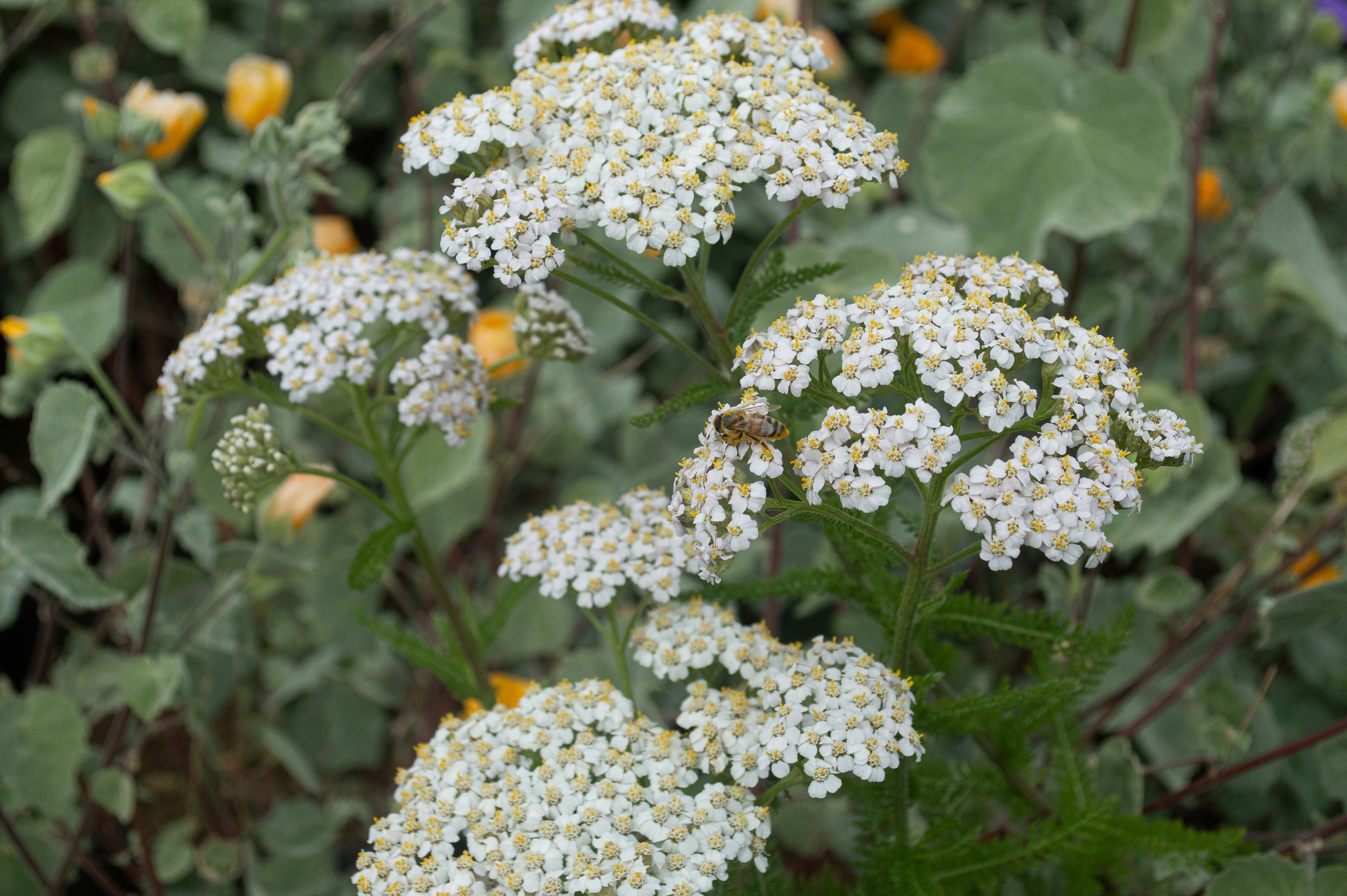Achillea millefolium (Common Yarrow)
← Back to Plant DatabaseAchillea millefolium
Common Yarrow

CHARACTERISTICS
Height: 1 - 3 ft
Width: 0.5 – 1.5 ft
Hardiness: Very hardy
Natural Setting: Adapted to many habitats throughout California, except the desert. Especially found in grasslands below 11,000 ft. ⁴
Plant Type: Perennial
Dormancy: Semi-evergreen
Form: Upright, Spreading
Growth Rate: Fast to moderate
Flower Season: Spring/summer
Soil: Nearly any type except very wet³
Sun Exposure: Full sun to partial shade
Water Requirements: Occasional to moderate
Summer Dry: Tolerates occasional light summer watering but not frequent summer watering.
Cold Tolerance: Tolerates cold to -10° F
OVERVIEW
Easy to grow with bright spring and summer flowers that attract pollinators. Very broad distribution throughout the Nortern Hemisphere.
CARE & MAINTENANCE
In inland areas, occasional summer watering will improve the appearance. To encourage longer bloom periods, regularly deadhead spent flowers.
Some gardeners prefer to leave the dried stems and flower heads to provide visual interest and habitat for wildlife. Alternatively, if you prefer tidiness, you can cut the plant back to the ground once all the flowers are spent.
USES
A good addition for a habitat garden or butterfly garden.
Can be used as a spreading groundcover or slope stabilizer.⁴
HISTORY
Achillea was named after Achilles, the Greek mythical hero who supposedly used it to treat his soldiers' wounds. The plant has been used for its wide range of medicinal properties, such as its ability to stop bleeding, heal wounds, and reduce fever. Yarrow contains several bioactive compounds that contribute to its therapeutic effects, including anti-inflammatory, antiseptic, and astringent properties.
Indigenous peoples across North America and other regions have traditionally used Achillea millefolium in their medicinal practices for centuries. For example, various Native American tribes utilized yarrow for treating wounds, toothaches, and gastrointestinal problems, as well as for its analgesic and anti-inflammatory properties.⁹ It was also used in spiritual practices and ceremonies, including as a protective charm and for divination.⁹
WILDLIFE
Its spring/summer flowers attract butterflies and bees. During the winter its foliage provides forage for birds.⁴
ANECDOTAL EXPERIENCES
Reseeds moderately readily and also spreads through rhizomes. Not opressive but moves around.
We encourage you to comment below and share your own experiences and recommendations for this species.
View Commenting Rules